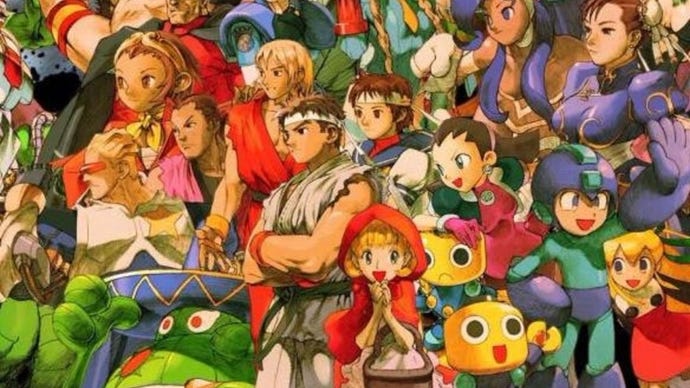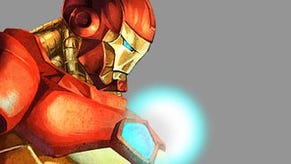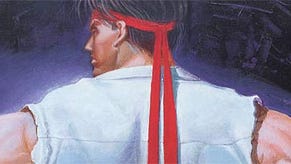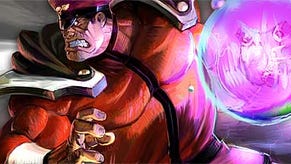Two Decades Later, There Simply Can't Be Another Marvel Vs. Capcom 2
How smack talk and superheroes created a scene that can't seem to be replicated.
This article first appeared on USgamer, a partner publication of VG247. Some content, such as this article, has been migrated to VG247 for posterity after USgamer's closure - but it has not been edited or further vetted by the VG247 team.
Marvel vs. Capcom 2 is a fighting game about literal gods. Between Capcom classics and Marvel's finest, three fighters on each side could fly onto the screen and fight at any given moment. It is both a symphony of movement and distilled chaos.
Released in Japanese arcades two decades ago, Marvel vs. Capcom 2 was a major step for both Capcom's Vs. series and its ongoing partnership with Marvel Comics. It put more characters on the screen, more fighters in the roster, and more assist options in the menu. The key pillar of Marvel Vs. Capcom 2 seemed to be more everything. No hype was too excessive.
The scene that grew up around it latched onto its energy. The turn of the millennium was a tough time for the competitive fighting game scene—arcades were on a downward trend. As Arturo Sanchez, a Marvel vs. Capcom 2 player at the height of its popularity, puts it, they were the dark days. But Marvel vs. Capcom 2 was one of the exceptions. When you heard the Marvel music boot up, saw that globe spin onto a cabinet and heard a voice asking if it could take you for a ride, you went.
This week is Marvel vs. Capcom 2's 20th anniversary. Despite its age, it remains perhaps the insurmountable peak of fighting game hype. Indeed, this year's Evolution Championship Series (or Evo) is hosting an MvC2 exhibition to honor its legacy; it's part of the lifeblood that kept Evo going for years, and a game that seems impervious to the passage of time.
Marvel vs. Capcom 2's popularity was born in the arcades. It was the era of Capcom's arcade fighting classics. The age of Marvel was also the age of Street Fighter 3 and Capcom vs. SNK. While the general populace had moved on, the fighting game faithful rallied around its greatest cabinets and put up their quarters.
Justin Wong is one of the most well-known fighting game players around, and one of the most prominent Marvel vs. Capcom 2 players of the era. From 2001 to 2010, he placed first seven times at Evo. Wong remembers being drawn to the excitement and the hype when Marvel vs. Capcom 2 first came on the scene.
"The arcade technician was installing a game, and I'm just like, 'What game is this?' Everyone's there, it was like, mad people," Wong told me. "And then once the game turned on, it said Marvel vs. Capcom 2, and everyone just got mad hype, really excited."

Marvel vs. Capcom 2 apart was a brand-new approach to the fighting game genre. Fights were three-on-three team battles, similar to The King of Fighters; but in Marvel, you could call in your teammates at any time, either to tag out or use a short attack, called an "assist." These assists, mixed with many characters' ability to link attacks in quick succession, made Marvel vs. Capcom 2 a game of over-the-top combos and overpowered teams.
It pit classic Capcom characters against Marvel's comic book titans, broadening its appeal in the west. Indeed, Marvel vs. Capcom 2 was more popular in the U.S. than it ever was in Japan. While this was before any Marvel Cinematic Universe was established, the X-Men comics were still very popular, and heroes like Captain America were timeless. Mix in Ryu, Mega Man, Morrigan and others, and it was a crossover unrivaled in the breadth of character types it spanned. This was a game where you could pit Servbot against Sentinel, Tron Bonne against the Hulk, and Strider against Shuma-Gorath.
Over time, Marvel vs. Capcom 2 became a game where technical players could exhibit mastery, piloting fighters like Storm and Cyclops with utter precision. The screen space was absolutely massive, but the heroes and villains of Marvel vs. Capcom 2 could easily fill it. Storm players would flit around in the virtual stratosphere, throwing out full-screen hailstorm attacks. Sentinel was a massive, imposing presence who covered portions of the field with a few button presses. Frivolously tag in an assist or back-up, and a skilled Cable player would catch you with a Hyper Viper Beam, whittling away your precious health in moments.
Marvel vs. Capcom 2 was also unique in that it ran on Sega's Naomi board, which shared architecture with the Dreamcast console. Part of its popularity can be chalked up to its role in leading Capcom's offerings on Sega's console, which helped to make it one of the greatest fighting game platforms in history. Its gorgeous backgrounds and sprite work made Marvel vs. Capcom 2 a showcase game for the Dreamcast, and even today, its aesthetic feels timeless.
Also, just listen to that character select music. When you heard "I wanna take you for a ride," you almost instinctively had to chime in with a "Dun-nun nah dun-nun nah," at which point you knew it was time for some Marvel.
Jam the Sensor
A large part of Marvel vs. Capcom 2's appeal stemmed from its enormous roster. With 56 playable characters, it dwarfed its predecessor. Oddly enough though, many of those characters were unavailable to start. To unlock every single character in Marvel vs. Capcom 2, you had to plug in a huge number of quarters, which many fighting game enthusiasts did. Voraciously.
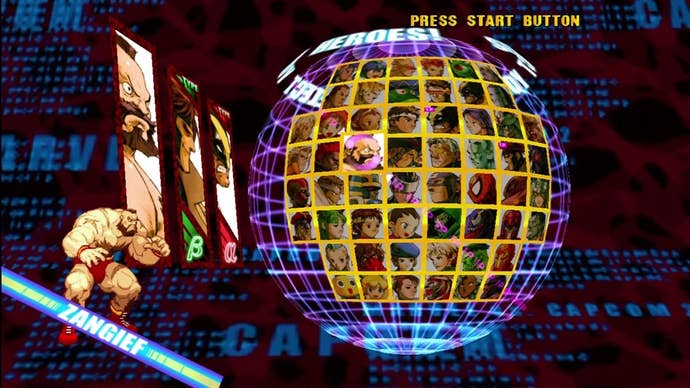
The earliest days of Marvel were defined by this unlocking phase, as the metagame—the overarching school of thought on how to best play the game—was shaped by which characters were available. Today, we can see the "gods" of Marvel that emerged after years of play; but at the start, players worked with what they had. Strider, Black Heart, even surprises like Iceman saw playtime. Tom Cannon, a former player-turned-developer working at Riot Games, remembers how arcade attendees took matters into their own hands.
"So we just sat there, opened the coin box, and just jammed on the coin slot, pumping in hundreds and hundreds of credits," Cannon says. "And it took us a couple of hours. But yeah, that was my day one of Marvel in arcades. Literally three hours jamming on a thing to unlock all the characters."
Wong tells a similar story of New York players begging the arcade technician to unlock the last few characters, including Sentinel. Eventually, despite the torrent of quarters, the technicians gave in. Then the real work got underway.
Gods Among Men
Ask what makes Marvel vs. Capcom 2 stand out from its contemporaries, and you'll get a few different answers. But more often than not, you'll get some variation on "broken." Fighters were, in the case of the Marvel side of the screen especially, tuned to feel like they should within their own universe; in this case, like superpowered heroes and villains.
Over time, players discovered the wealth of things you could do with these "broken" heroes and villains. Characters had full-screen super attacks, and you could stack supers up for a devastating team attack. Combos could skyrocket into infinites, never letting up on the pressure.
Seth Killian, a well-known fighting game developer and commentator, tells me the souped-up "walking gods" of Marvel were what helped Marvel vs. Capcom 2 succeed. It took away "guard rails" in order to allow players more freedom in the play space.
"During Marvel vs. Capcom 3, I always compared the Marvel series to fast motorcycles going around a sharp curve in the rain," Killian says. "It’s a helluva ride, but you take that curve often enough, you expect it to crash—to break— eventually. You could probably improve your odds and not crash by taking a safer approach, but the Marvel games were always about going for it and risking disaster."
Sanford Kelly, a Marvel player and Evo champ, tells me "if it wasn't broken, it [wouldn't] be Marvel." It helped that Marvel vs. Capcom 2 had the X-Men. In the world of Marvel, the X-Men are exceptionally powerful; in Marvel vs. Capcom 2, they were dominant. The top four characters in the competitive scene, considered the most powerful characters in the game, were Storm, Sentinel, Magneto, and Cable. Even popular assists, like Cyclops and Psylocke, were X-Men characters.
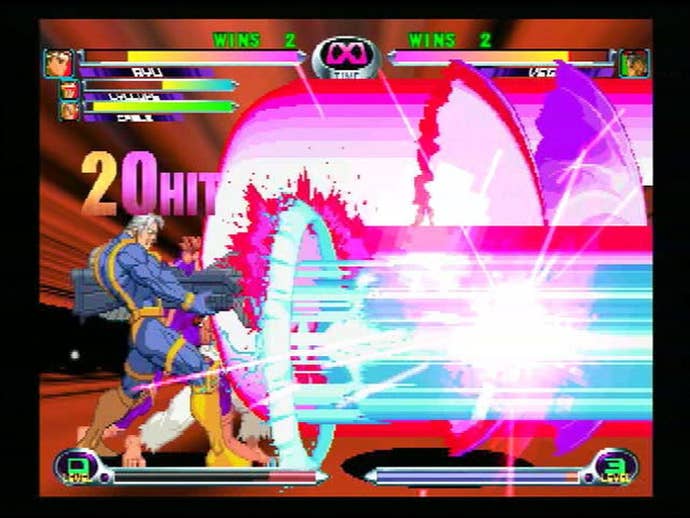
The characters that emerged as the top fighters were those that could move and fight in the giant battles for space. Marvel vs. Capcom 2 was almost a battle of attrition at times; East Coast players especially loved to play keep-away and force errors from over-eager competitors. A larger arena than Street Fighter meant more ways to control space, and so combatants like Storm became popular due to their screen-covering super and extensive movement options. On the flipside, Magneto was known for his devastating offensive capabilities, able to demolish entire teams if given an opening.
When I asked Sanchez about his most memorable moment in Marvel, he told me about a tournament being run at The Break in New Jersey. The event was running way over, and by the time Sanchez was up to play Justin Wong, it was 4 a.m. Daylight was a few hours away from breaking. In the middle of the match, Wong landed the right setup with Magneto to start an infinite combo on Sanchez. As Sanchez's fighters found themselves locked in an eternal juggle for the rest of their lifespans—like a pixelated beach ball at Coachella—Wong stared his opponent down. He wasn't watching the screen, because he knew what was happening, and what his hands had to do. "I got sonned," Sanchez tells me. Marvel vs. Capcom 2 was—is—that kind of game.
High-level play was often defined by moments like these. But as the keep-away games and mechanics developed, you could see Marvel vs. Capcom 2's potential open up. Players kept improving, bolstering their technique, and finding new ways to deal with each others' playstyles.
"You could just feel the possibility space," Killian says. "Then when you played, first thing you thought to try was the cheapest, meanest trap you ever saw in a Capcom game. And it went on and on like that—a giant space of limitless bullshit dirty tricks. It was a great feeling."
Where Street Fighter hunted for frames in small arenas, Marvel Vs. Capcom questioned how much larger and the over-the-top things could get. Comebacks were extremely tough, but never impossible. Over time, the level of both execution and knowledge became its own standard. As Sanchez tells me, the game evolved over the years into a sort of "spectator sport." It was a place for giants to clash. And they did, over and over again.
Coast to Coast
Scenes like these almost always took place in arcades. The North American arcade scene was rapidly dying in 2000, but fighting games helped them cling to relevance, if only just. With online play being nascent at best, and most of Marvel vs. Capcom 2's popularity based in North America, competition in Marvel was highly regional. Specifically, it was centered on two hotbeds: the East Coast and the West Coast.
"Esports wasn't even in the lexicon until like, Street Fighter 4," Sanchez says. "So that never even entered the conversation in my mind. A lot of it was regional hype."
Each side of the U.S. would tout itself as the best. In the east, you had Justin Wong, Michael Mendoza a.ka. Yipes, and Sanford Kelly. Players like Duc Do and Alex Valle posed their own threat from the west. It wasn't just about scenes—it was a clash of style.
"The West Coast players, they play Magneto, they play rushdown style," Kelly says. "East Coast plays very defensive compared to West Coast players. That's the thing. They hated our style of play, and we hated theirs."

Coastal rivalry soon quickly became the story of Marvel Vs. Capcom 2. While Japan had its own players, as did the rest of the U.S., East Coast vs. West Coast was the main stage.Its most prominent players all hailed from these regions and reigned dominant. Money matches, like the over $6000 bet put on the line between Kelly and Duc in a match at Evo 2006, inspired hype in the scene and reinforced the competition.
This wasn't necessarily about winning massive prize pools, though. Wong tells me about spending $25 to compete in local tournaments that would only net $50 for first place, and still players would hide their techniques from each other to not "mess up their money." There weren't any Dota-sized multi-millions. Players would often sit on the floor with their massive, early-aughts arcade sticks. "No one was thinking about stream numbers, stream clout," Sanchez says. "It was just a bunch of goons playing their game, tryin' to get hype."
It's Marvel, Baby
Of course, you can't talk Marvel vs. Capcom 2 without mentioning one video. Yipes wasn't just known for his Marvel play, but his personality as well. One video spread around the Internet, of Yipes in-person commentating a match, and one refrain stuck: "It's Marvel, baby."
Marvel had the overpowered, seemingly broken characters. It had the regional rivalries, and the talented players who could push the game further and further each year. But most of all it had a scene that gravitated towards the sound and fury of a three-on-three duel of the gods. Killian remembers it as "loud" and "diverse;" Cannon calls it an "exaggeration" of the baseline culture of fighting games.
"When you see that sick setup that you've never seen before, or you see someone just blatantly wasting resources just so they can posterize you," Cannon says. "The pop-offs. The mid-round, mid-game pop-offs. People are just like, clearly really into it and really dialed in. People say 'When's Mahvel?' for a reason."
It was a game of big moments and comebacks. Justin Wong infamously brought a game back from a 1v3 situation with his Cyclops, running it back and dismantling Yipes' team one by one. (Wong tells me that while most people would remember this, his favorite comeback was actually a single-pixel runback from a Texas Showdown match.) "I still say Marvel, that they always set the bar for bringing the hype and having some of the biggest money matches in the scene, period," Sanchez says.
Records of this era are tough to find, and they have their quirks. Technology wasn't quite up to par with what we have nowadays. Sanchez tells me about how video tapes would circulate with matches and techniques: "If you weren't in the know, you weren't getting the VHS tape."
One collection still persists, from one ZachD a.k.a. "Preppy," who built an archive of videos with searchable terms for players and characters. Yes, they have that VHS tinge to them, but it's a reminder of Marvel's grassroots origins. Even without the technology, the lights and the prize pools, Marvel players were determined to support this game.
No One Like You
The announcement of a Marvel vs. Capcom 2 exhibition at Evo 2020 caught a lot of people by surprise. Evo is the largest fighting game tournament around, and current games are often the focus of attention. For every Super Smash Bros. Melee or Under Night, the main stage is more often set with current games: Street Fighter 5, Dragon Ball FighterZ, or Super Smash Bros. Ultimate.
But much like its contemporary Street Fighter 3: 3rd Strike, the Marvel vs. Capcom 2 scene might have left the main stage, but the hype never died.
Yipes, Sanchez, and others have been organizing tournaments like Battle For The Strongest, which keeps Marvel alive while attracting new players. Sanchez tells me that he goes for high production value, but still tries to keep it true to Marvel's roots; "Hitting the deck and not being on esports chairs," he says, referencing the tradition of sitting on the floor with your stick.
New ideas are entering the scene too. Kelly tells me that after stepping back from the scene in 2010, he played again a few years later against a player called Khaos, who started breaking out techniques he'd never seen. "He'd be showing me all types of stuff I didn't even think was possible in that game," Kelly says. "And I was playing the game for 10 years straight."
Wong tells me he's been picking the game back up again, playing on his Twitch stream using a Dreamcast with an HDMI port modded in. While he's been enjoying getting back into the game, he's actually been spending more time getting to know the "low tiers," characters who haven't been dominating like the X-Men have.
"It seems like, when you think about the '90s, early '00s, values are so old fashioned, where no one wanted to try something new," Wong says. "Where now, the last few years, thinking outside the box, a lot more people are willing to try different things now."
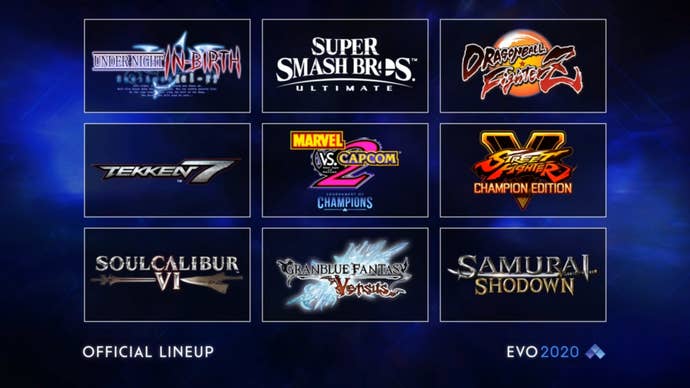
This year's Evo series is going to bring back one of the classics, a game that ultimately defined some of its greatest moments. I asked everyone I could why Marvel Vs. Capcom 2 was still the king. When matched up against the many other fighting games out there, why this one?
"I think this is maybe the interesting part about this style of fighting game," Cannon says. "Marvel's done it so well that I'm not sure if it's worthwhile to try to make a better [Marvel Vs. Capcom 2]. A [Marvel Vs. Capcom 2] remaster or something would be awesome, but how do you out-do [Marvel Vs. Capcom 2] at the thing it was trying to do?"
The over-the-top explosion of Marvel Vs. Capcom 2 ended up being a blueprint nothing could copy, or really even surpass. Skullgirls, Power Rangers: Battle for the Grid, and Dragon Ball FighterZ can all take some level of inspiration from the Vs. series, but there's nothing quite like Marvel Vs. Capcom 2. The series can't even surpass itself.
The culture that surrounded it, the people that built it, and the energy that emboldened it is almost impossible to replicate in the modern age. There are simply few games that try to imitate this level of excess; that let you pick up a squad of Marvel giants and run an Iron Man infinite dozens and dozens of hits. It got a crowd going and inspired a generation of legends. Many games will come and go, but someone will always ask, "When's Mahvel?"
